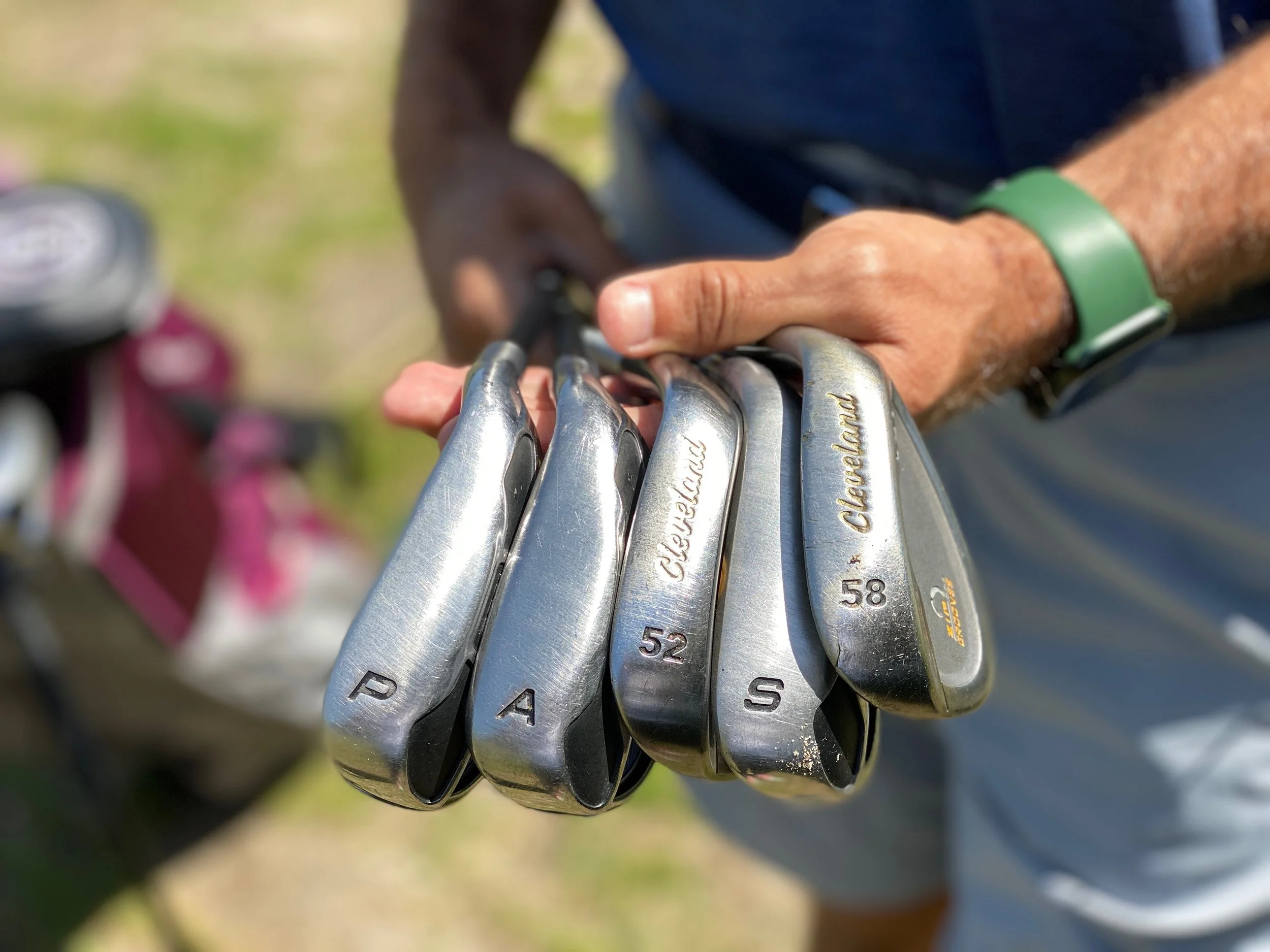We have a lot of students who come out for golf lessons or classes who are brand new to the game and don’t know the difference between their clubs. Additionally, we have a ton of seasoned golfers who often get confused by the amount of variations of wedges that they might have in their bag. Your wedges might have a letter or a number on them. The varying degrees of loft can be quite overwhelming. Here’s a standard chart of the typical wedges you might have in your bag:
Pitching Wedge - 43-47 degrees
Gap Wedge - 47-52 degrees
Sand Wedge - 54-56 degrees
Lob Wedge - 58-62 degrees
First of all, as a new golfer, make sure you don’t have redundancy in your bag. You might have multiple clubs that are so close in loft that it’s completely unnecessary to have both. So check your lofts on your clubs. If your club has a letter instead of a number, you can have your club checked by someone who builds or repairs clubs to ensure that you have what you need in your bag.
The reason why this topic is so confusing is because of marketing.
It used to be that a pitching wedge was 50 degrees of loft, a 9 iron was 46 degrees, and an 8 iron would be 42 degrees. That pitching wedge would be enough loft that you would be able to hit a nice high shot that lands softly (known as a pitch shot) hence the name pitching wedge. Then you would have a sand wedge that would normally be 56 degrees. Just from your pitching wedge to your sand wedge would be a little bit of a stretch (*or gap) between the lofts. The manufacturers were trying to sell more golf clubs and probably sitting around the room trying to figure out how to sell more clubs by giving golfers what they want.
What do golfers want? They want more distance.
So they said, if we start making the lofts a little stronger, people would think they were hitting the clubs much longer. This continued happening until the pitching wedge became generally around 46 degrees which then popularized the club known as the gap wedge (also known as an alternate or utility wedge). It is a wedge that’s in between the pitching wedge and the sand wedge.
So what wedges do we need in our bag?
You absolutely need a 54 to 56 degree sand wedge in your bag. It’s an absolute necessity. You also should have a gap wedge. And then more than likely you will have a pitching wedge which hits more like an iron now than a wedge. You might also be tempted to have a 60 degree lob wedge in your bag. The actual area to effectively hit the ball solidly on a 60 degree lob wedge is very small so it becomes extremely tricky to hit well. You would do well to take the 60 out of your bag which will also help with some indecision you might have on which club to use.
Feel free to respond with any questions about wedges. Don’t forget, we go live on Youtube on Thursday, May 26th at 4 pm EST to talk more about this topic.


